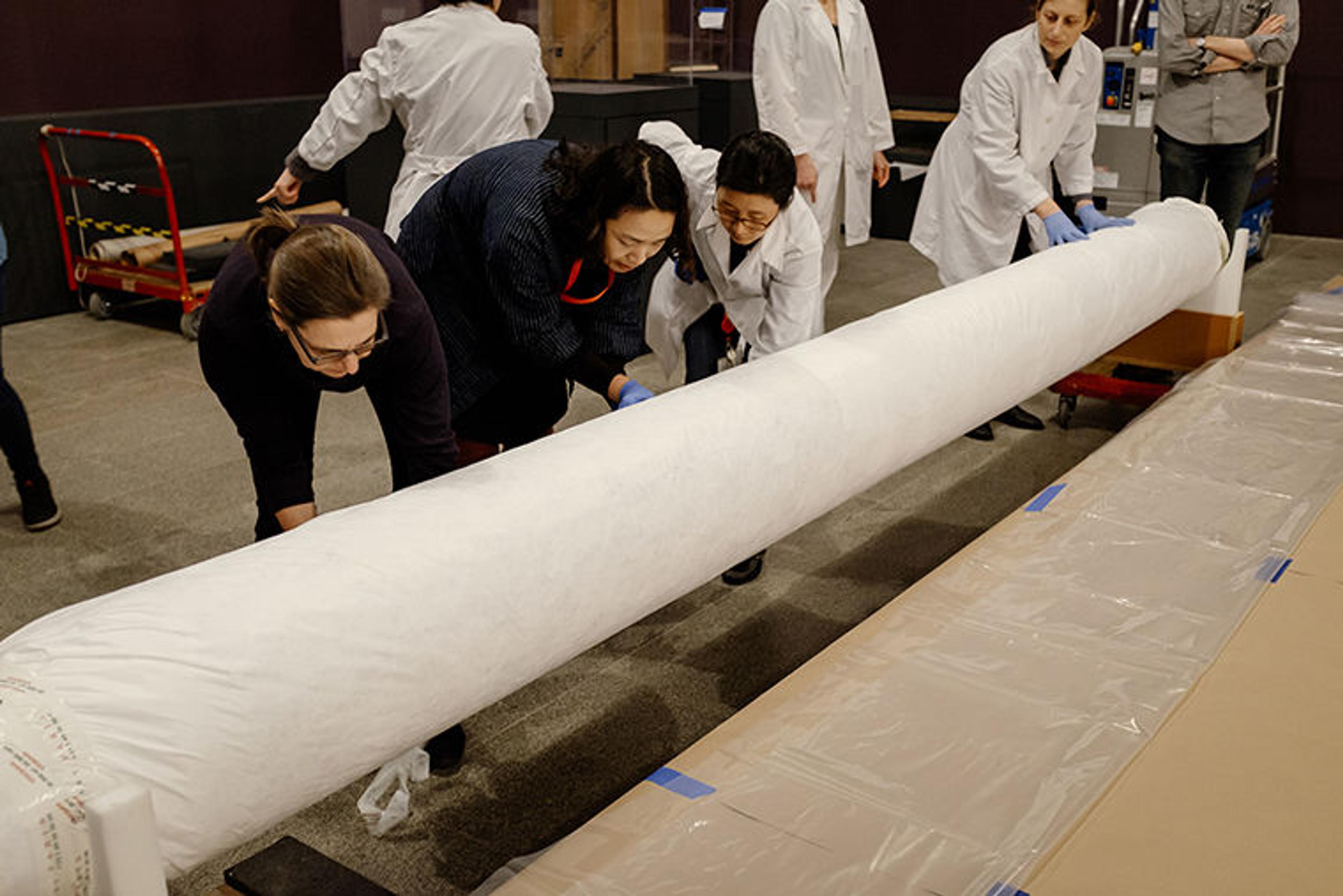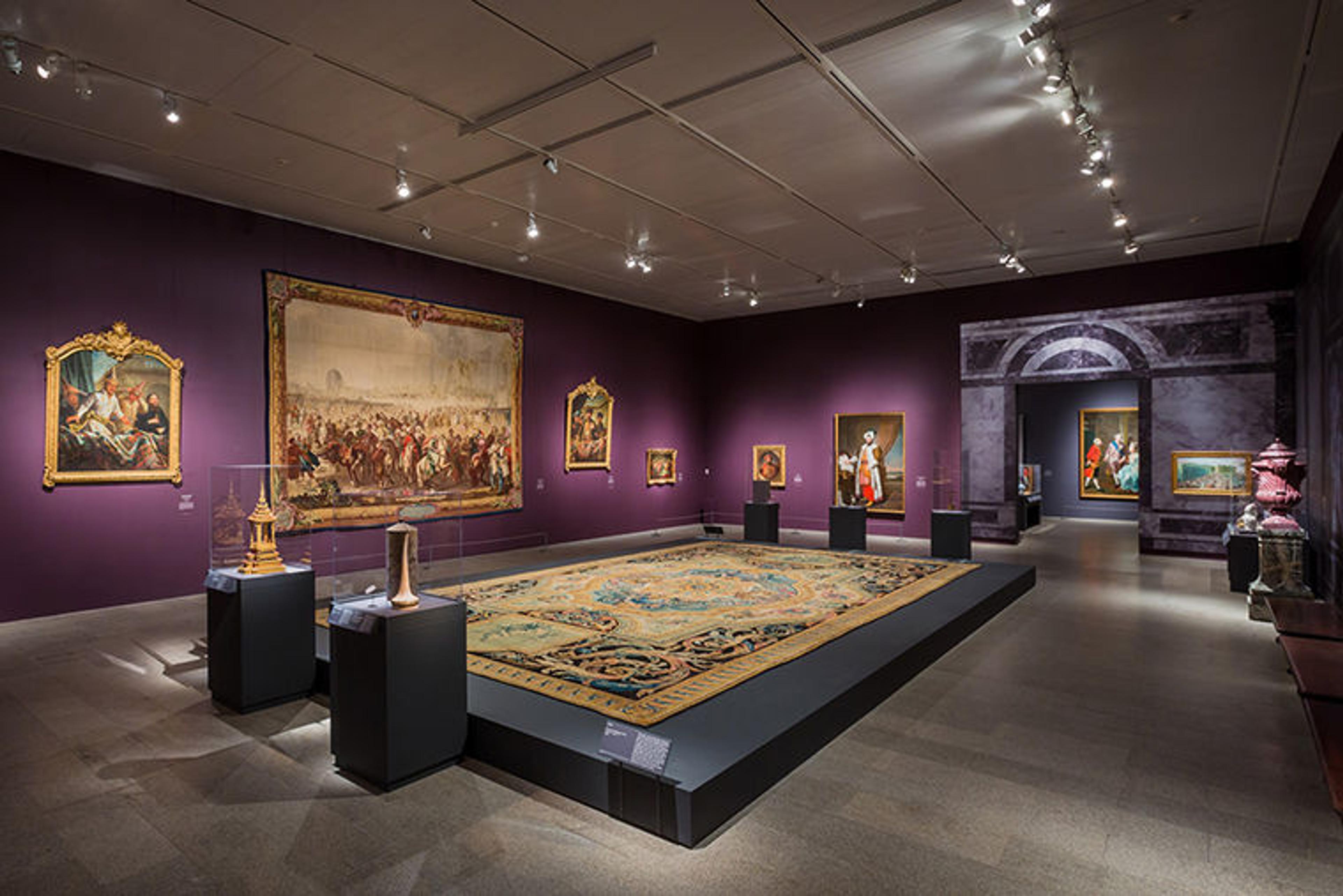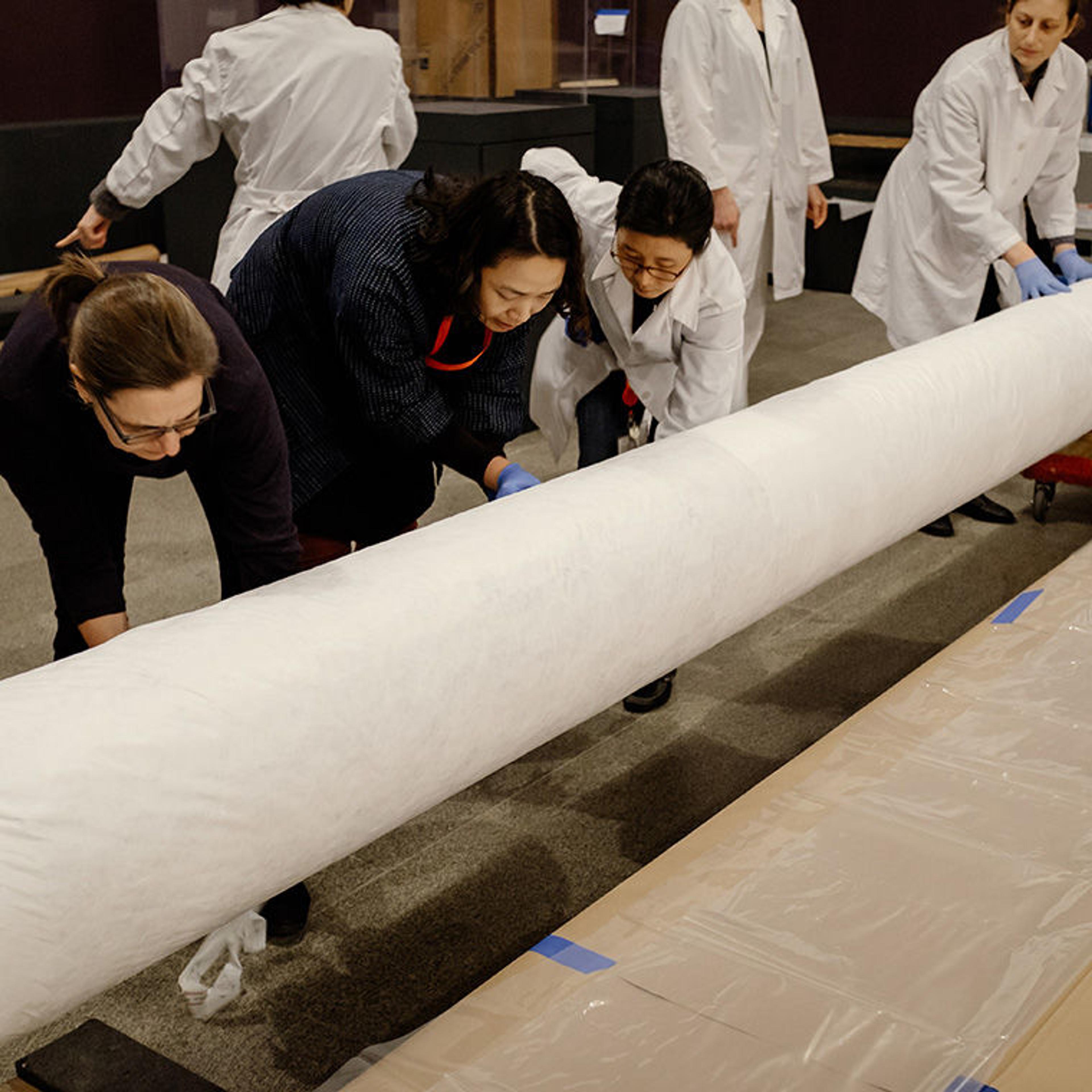
Museum staff prepare a work of art for installation in Visitors to Versailles (1682–1789)
The logistics of organizing and installing special exhibitions at The Met is a complex orchestration. There are many participants from multiple departments, including curatorial, design, conservation, exhibitions management, and buildings. Then there is the registrar, tasked with coordinating art shipments. When installing special exhibitions, the daily schedule is arranged by the exhibition registrar. I was very fortunate to handle those responsibilities for Visitors to Versailles (1682–1789), which proved to be a challenging and rewarding process. It also proved to be a good occasion to address some frequently asked questions about what a registrar does.
What is a museum registrar?
When asked this question, my standard reply has always been that we are risk managers for the art in our care. In practical terms, this means we are responsible for the safe packing, shipping, and handling of all art that comes into and out of The Met, whether the art in question is in the Museum's collection, or is the property of others. We also coordinate insurance coverage, create paper trails (yes, paper!), and maintain digital files documenting all arrangements. In a broad overview, The Met's Registrar Department is divided into three areas: outgoing Museum loans; exams, which are incoming works for acquisition consideration; and exhibitions. The five exhibition registrars handle approximately thirty-five to forty exhibitions a year at The Met Fifth Avenue and The Met Breuer, and though the size, scope, and contents widely vary, our procedures are consistent from exhibition to exhibition.
What was your role in planning Visitors to Versailles?
At The Met, exhibitions can be scheduled as many as three years in advance of opening. Because Visitors to Versailles was originally scheduled to open at The Met in 2017, initial meetings took place in 2014, when the exhibition's curator, Daniëlle Kisluk-Grosheide, presented her vision and proposed checklist for the show. (Ultimately, it was determined that our presentation would take place in 2018, and that the show would instead open in October 2017 at the Château de Versailles in France, which co-organized the exhibition.)
Following these early meetings, the exhibition team, composed of representatives from departments across the Museum, submitted first-round budgets for their areas, ranging from construction and design, to conservation, marketing, and special events. As registrar, I was responsible for securing preliminary costs for the packing of all objects, for shipping loans to New York, and returning them to lenders after the close of the exhibition. I also gathered costs for courier travel and lodgings, insurance premiums, and loan preparation fees. My budget was updated on several occasions through late 2017 as more and more details were finalized.

This gallery in Visitors to Versailles focuses on foreign diplomatic missions to Versailles, which came from as far away as Siam
In the eighteen months before the show came to The Met, I worked very closely with the exhibition's research associate, Elizabeth Benjamin, to review and monitor the status of loan agreements, to clarify lender requirements concerning insurance, conservation, mounting, and displays, and to make sure this information was circulated to relevant team members. There were also exchanges with our counterparts in France on issues relating to shared loans and costs. The core exhibition team of the curator, exhibition manager, conservators, registrar, exhibition designers, lighting designers, and buildings and construction managers met with greater and greater frequency to vet the most challenging issues within the final six months leading to the installation. There were a number of breakout groups tasked with tackling specific loan-related issues. My attendance at these meetings was important because all of these decisions for individual objects had to be considered when creating the shipping, unpacking, and installation schedules.
What loans created the greatest logistical challenges?
The Gobelins tapestries from the Mobilier National in France are approximately thirteen feet high and twenty feet long. It was certain that the packing crates they came in were too large to move from our receiving areas to the galleries, so we needed to make sure that the tapestries could be safely uncrated in our storage area and moved on rolling tubes to the galleries. A plan was developed with our buildings manager and textile conservators so that Museum riggers could navigate the twists and turns of our hallways and freight elevators prior to business hours, accompanied by representatives of the curatorial, conservation, and registrar departments, who ensured safe delivery to the galleries.

Three-piece suit (habit à la française), ca. 1778–79. French. Ribbed silk and linen (reproduction shirt, shoes, and stockings), mounted on form: 60 x 30 x 24 in. (152.4 x 76.2 x 61 cm). Smithsonian's National Museum of American History, Washington, D.C. (2012.0187.001). This suit was brought by Benjamin Franklin to France in 1779, the year he was made American minister to France.
Another challenge was meeting the Smithsonian's National Museum of American History's light level requirements for the display of Benjamin Franklin's suit (above). To ensure that this well-preserved but fragile material would not be subject to fading, there were months of review and discussions with our Costume Institute conservators, lighting designers, and the lender until we reached a design solution that was acceptable to all parties.
The inclusion of ivory objects in the exhibition—such as the set of eighteen ivory buttons with views of the palace and gardens of Versailles—necessitated applications to the U.S. Fish and Wildlife Service. I worked very closely with the Counsel's Office at The Met and our local and foreign shippers to submit all the documents required for the import of non-commercial ivory for exhibition purposes.
How did you create the shipping and installation schedule?
I think many exhibition registrars would agree that the most creative part of our jobs is solving the puzzle of the installation schedule. The Visitors to Versailles opening preview was held on April 9. The galleries would need to be ready for installation three weeks in advance, on March 19. So how would we receive twenty-one shipments and unpack, condition check, and install 190 objects in three working weeks? Would our colleagues in France have enough time to pack and transfer the approximately 140 loans to meet our schedule, or would they need to release them before our galleries were ready to receive them? How would we integrate the more than thirty additional loans from collections in Europe, the UK, and the US?
Where to start? It begins with a floorplan. Six months in advance of the first shipment, I requested a large-format version of our floorplan, pinned it on the wall adjacent to my desk, and then stared and stared and stared. I imagined walking through the space and considered the routing of oversize crates and equipment. To identify pinch points, I annotated the floorplan with lender abbreviations and ID numbers. Then I created a color key and used markers to highlight the lender names. The colors served as a visual cue and were particularly helpful indicating loans from multiple lenders and institutions that were to be installed together in one case.
Ideally, all of the large paintings, sculptures, and tapestries would be installed first; then the costumes; and lastly the small and fragile objects displayed in cases. With this plan in mind, I negotiated with our colleagues at Versailles and our French and US shippers to schedule the numerous shipments to determine a schedule that worked for all parties. Once the shipments were set, I created a day-by-day installation schedule indicating each crate to be unpacked and each object to be condition checked. The schedule included the conservators and couriers responsible for each work and was circulated to more than thirty-five members of the installation team and updated on a daily basis. We ended up following our overall scheme, but with a great deal of flexibility as we surmounted the many challenges involved.

Presentation sword and hilt, 1780. French. Sword: partly blued steel, gold hilt; scabbard: black-painted leather and gold; case: wood covered with morocco leather with gold tooling and lined with chamois; brass. Sword: 39 3/4 in. (101 cm); scabbard: 33 in. (83.8 cm); carrying case: 3 1/2 x 4 1/2 x 41 in. (8.9 x 11.4 x 104.1 cm). US Naval Academy Museum
What objects were especially surprising?
One of the great satisfactions of being an exhibition registrar is that we observe the opening and unpacking of every crate, and it is always a thrill to "meet" the actual objects after spending years looking at thumbnail images. The powder flask and quiver from the Musée de l'Armée were especially great surprises because the images gave no real sense of their jewel-encrusted beauty.
As a history buff, I was very excited to unpack the presentation sword belonging to John Paul Jones that was presented to him by Louis XVI in 1780 (above). It was also a thrill to see and read Thomas Jefferson's French passport, signed by Louis XVI and dated September 18, 1789.
The planning and realization of this wonderful exhibition was a perfect example of teamwork at The Met at its best. There is so much more that I could say, but the exhibition closes on July 29—and I must go and plan the deinstallation!
Related Content
Visitors to Versailles (1682–1789) is on view at The Met Fifth Avenue through July 29, 2018.
Learn more about the binaural audio experience and view the exhibition galleries.
Read a blog series about Visitors to Versailles on Now at The Met.
The exhibition catalogue is available for purchase at The Met Store.
